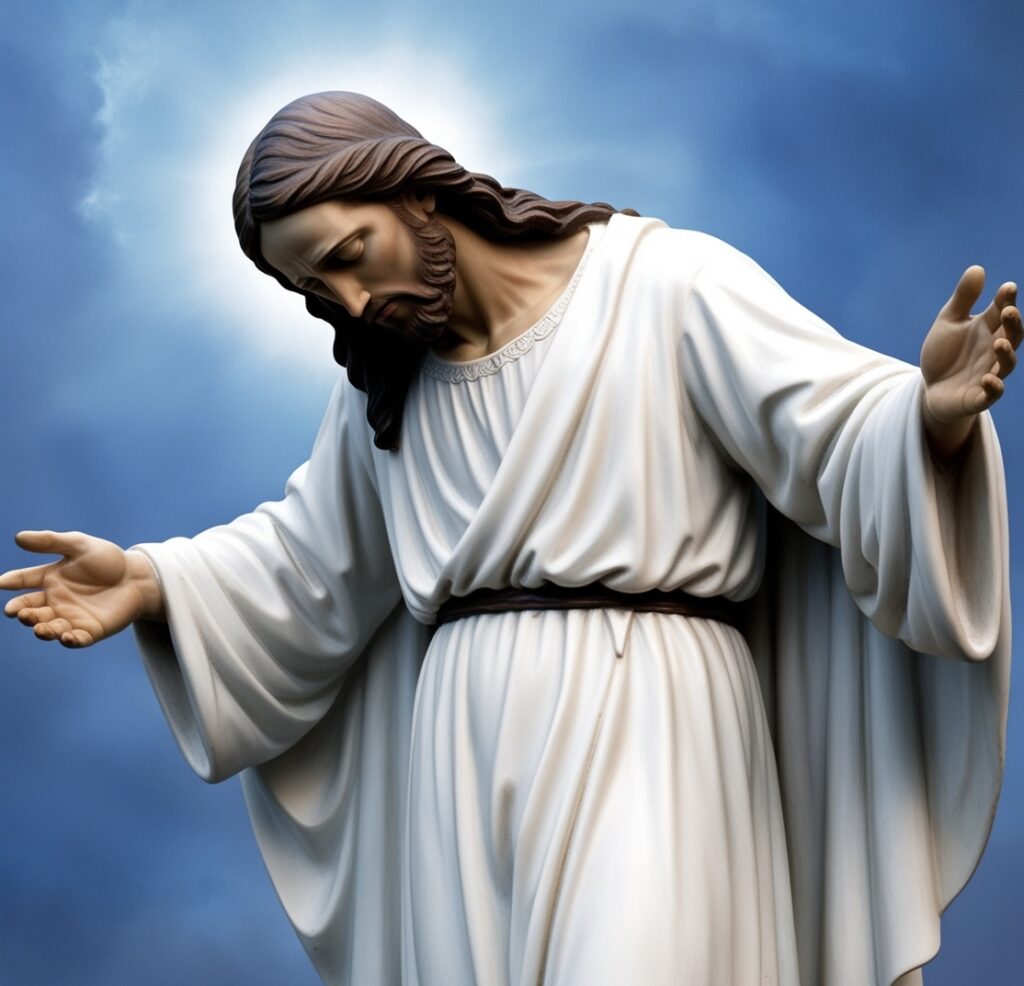I want to share with you one of the most outrageous and absurd claims I’ve ever encountered from a defender of the Mormon faith.
In a recent post, Colton Miller argues that if Joseph Smith is a false prophet due to unfulfilled prophecies, then the same reasoning would apply to Jesus.
He references Matthew 24:34, to support his claim, while also drawing comparisons to passages found in the LDS scripture, Doctrine and Covenants, specifically D&C 84:2-5. Colton’s assertion is deeply problematic, and I find it odd that Miller would go to such extremes, claiming that Jesus did not fulfill prophecy, all to defend Joseph Smith. You can watch the full video below to hear his perspective directly.
What’s The Issue?
In Matthew 24:3, the disciples ask about the destruction of the temple, but they also ask about Jesus’ coming and the end of the age. These are two distinct questions: one is about a historical event—the destruction of the temple—and the other about a future eschatological event.
Jesus begins addressing the first question about the temple’s destruction in Matthew 24 and only later talks about His return and the end of the age, particularly in Matthew 25.
Comparing The Gospels. Did Jesus Make A False Prophecy?
This moment is described as the Olivet Discourse and it is found in the Gospels of Mark, Luke, and Matthew, where Jesus predicts the destruction of the Jerusalem Temple. In Mark 13:30 and Luke 21:32 the phrase “this generation” is understood to refer to those alive during Jesus’ ministry, particularly those who would witness the temple’s destruction in 70 AD. Since “this generation” in the Olivet Discourse points to those living in Jesus’ day (around 30 AD), we can see that within a generation (about 40 years), the temple was destroyed in 70 AD, fulfilling the prophecy Jesus made.
Now, Matthew 24 is often seen as referring to the destruction of the temple, because Matthew 25 contains parables about the final judgment and Jesus’ second coming, addressing the disciples’ questions about the end of the age.
When comparing the Gospels we can see how Matthew’s added questions about Jesus’ return and the end of the age are distinct from the historical event Jesus was primarily discussing. (The destruction of the temple). Again, Jesus answers the questions about the world’s end in Matthew 25. In all three gospels, the Olivet Discourse is only talking about the destruction of the temple.
But, The Olivet Discourse Sounds Like It’s Talking About the End of the World!
Now I understand why those like Colton might think that Jesus’ words in the Olivet Discourse (Matthew 24, Mark 13, and Luke 21) are referring to the literal end of the world. The imagery Jesus uses—darkened skies, stars falling, and the coming of the Son of Man in clouds—sounds like something out of a post-apocalyptic movie. However, when we carefully examine the context and the apocalyptic language used in all three Gospels, it becomes clear that Jesus was not predicting the end of the world, but rather the imminent destruction of the temple and the judgment on Jerusalem. (Now I admit, this language may have an eschatological dimension, but this does not mean it is necessarily about the end of the world)
Apocalyptic Language as Symbolic of Judgment, Not Literal Cosmic Catastrophe
Throughout the Olivet Discourse, Jesus uses apocalyptic imagery that was familiar to Jewish listeners of his time, which was not meant to be taken literally, but rather symbolically. The references to the sun being darkened, the moon not giving its light, and the stars falling from the sky (found in Matthew 24:29, Mark 13:24-25, and Luke 21:25-26) are classic examples of symbolic judgment language.
In the Old Testament, similar imagery is used to describe the fall of powerful nations and cities. For example, in Isaiah 13:10, speaking of the fall of Babylon, it says: “The stars of heaven and their constellations will not show their light. The rising sun will be darkened, and the moon will not give its light.” Similarly, in Joel 2:31, a passage often cited in connection with apocalyptic events, it says, “The sun will be turned to darkness and the moon to blood before the coming of the great and dreadful day of the Lord.“ Ezekiel 32:7 has the same imagery about Egypt’s fall, stating, ” When I snuff you out, I will cover the heavens and darken their stars; I will cover the sun with a cloud, and the moon will not give its light.”
These images symbolize cosmic upheaval but are not meant to indicate the literal end of the world. They represent the collapse of earthly powers and systems.
In the Olivet Discourse, this cosmic imagery symbolizes the collapse of Jerusalem and the end of the Jewish religious system centered around the temple. This destruction would be so cataclysmic that it would seem as though the whole world was coming to an end. But in reality, Jesus was speaking about a spiritual and social upheaval—the end of an era for the Jewish people.
The Coming of the Son of Man—Not the End of the World, But a Divine Vindication
In Matthew 24:30, Mark 13:26, and Luke 21:27, Jesus says, “At that time people will see the Son of Man coming in the clouds with great power and glory.” This language is often associated with the second coming of Christ, but it’s important to recognize that Jesus is drawing on Daniel 7:13-14, where the Son of Man comes with authority and judgment. In this context, the clouds are symbolic of divine judgment and the vindication of Jesus as the Messiah.
When Jesus speaks of the Son of Man coming in the clouds, he is not predicting a literal second coming at the end of time, but rather the manifestation of God’s judgment on Jerusalem. The coming in the clouds refers to Jesus’ divine authority being revealed through the destruction of the temple. This was a vindication of Jesus’ teachings and prophecies that Jerusalem would face judgment because it had rejected its Messiah. It also marks the end of the Jewish age, with the temple’s destruction signaling a definitive break between the old covenant and the new.
The Gathering of the Elect—Preservation Amid Judgment
In Matthew 24:31, Mark 13:27, and Luke 21:28, Jesus speaks of the gathering of the elect from the four winds, indicating that the faithful will be preserved during the tumultuous events that will follow. This gathering is often interpreted as the rapture or a final gathering of believers at the end of time, but in the context of the Olivet Discourse, it has a different meaning.
The gathering of the elect is not about Christ’s final return but refers to the preservation of believers during the destruction of Jerusalem. In the first century, Christians were told to flee the city when they saw the signs of Jerusalem’s impending doom (as recorded in Luke 21:20-21). Jesus’ words about the elect being gathered reflect the idea that believers will be preserved and will find refuge in the midst of the coming destruction. The gathering of the elect is symbolic of the church surviving the calamity and continuing to spread the message of Christ to the world after the fall of the temple.
The Fig Tree Lesson—Imminence of the Event
One of the most powerful pieces of evidence that the Olivet Discourse is not about the end of the world comes from the Fig Tree Lesson in Matthew 24:32-34, Mark 13:28-30, and Luke 21:29-32. Jesus uses the fig tree as a simple illustration: “Now learn this lesson from the fig tree: As soon as its twigs get tender and its leaves come out, you know that summer is near. Even so, when you see all these things, you know that it is near, right at the door.”
Jesus is telling his disciples that the signs he is describing—wars, false prophets, earthquakes, and the abomination of desolation—are indicators that the destruction of the temple is near. The fig tree’s budding signals the arrival of summer, just as the signs Jesus mentions indicate that the destruction of Jerusalem is imminent. Jesus’ point is clear: the generation he is speaking to will witness the fulfillment of these prophecies—an event that would occur within their lifetime.
This is a stark contrast to ideas of a distant end of the world. The language of “this generation” in Matthew 24:34, Mark 13:30, and Luke 21:32 makes it clear that these events were not far-off but imminent, reinforcing that the Olivet Discourse was concerned with the temple’s destruction rather than some distant future end.
However you view him, its also worth mentioning, that Josephus and The Jewish War provides much detail on what happened during the fall of the temple, his descriptions are strikingly similar to Christ’s prophecies, such as natural disasters and famines.
“This Generation”—A Clear Reference to Jesus’ Contemporaries
One of the most compelling reasons to reject the idea that the Olivet Discourse refers to the end of the world is Jesus’ statement that “this generation will certainly not pass away until all these things have happened” (Matthew 24:34, Mark 13:30, Luke 21:32).
When Jesus uses the phrase “this generation”, he is referring to the people who were alive during his ministry—his immediate audience, the disciples and the people of Jerusalem. The destruction of the temple and the judgment on Israel would occur within their lifetime. Jesus is not predicting a distant event, but rather a historical one that would happen soon after his death, fulfilling the prophecies he had spoken about.
The clear implication is that the Olivet Discourse is focused on events of Jesus’ time, specifically the destruction of the temple and the end of the Jewish age, rather than the final judgment of the world. Jesus’ audience would have understood this as a prediction about their generation, and not as something thousands of years away.
The Absence of Final Judgment Language in the Olivet Discourse
While Matthew 25 does describe the final judgment with parables about the sheep and goats, Matthew 24 focuses on the destruction of the temple and the judgment on Jerusalem.
In the Olivet Discourse, Jesus speaks of tribulation, persecution, and false prophets, but he does not give a full picture of the final separation of the righteous and the wicked that we find in Matthew 25. The final judgment, when Christ separates the sheep from the goats, is discussed in a separate context. In the Olivet Discourse, the judgment Jesus describes is primarily focused on the rejection of Israel’s leaders and the collapse of the Jewish religious system centered around the temple. This is a judgment that was imminent, one that would occur within the lives of Jesus’ disciples and would be marked by the destruction of the temple—a monumental event in the history of Israel.
Paul’s Understanding of Matthew 24
Miller argues that since Paul believed in an imminent return of Christ, he must have understood “this generation” in Matthew 24 as referring to his own time, and thus the prophecy was unfulfilled. However, this claim misrepresents both the historical context of Jesus’ words and Paul’s teachings. However, this is Colton’s most absurd claim. He claims Paul took Matthews’s teaching “hook line and sinker” to be about Christ returning in his generation. This is extremely problematic. Most scholars agree that Matthew’s Gospel was written after Paul’s letters. Matthew is usually dated around 70-100 AD, while Paul’s letters were written between 50-67 AD. Therefore, Paul would not have had access to Matthew’s Gospel when writing his letters.
While Paul may have been aware of some sayings of Jesus circulating in the early church, he would not have had direct knowledge of Matthew’s Gospel, especially since it was composed after his letters.
Colton’s Misunderstanding Of The Fulfillment of Jesus’ Prophecies
In conclusion, Jesus’ prophecy in Matthew 24 was not about the end of the world, but rather the destruction of the temple in 70 AD, which occurred within a generation of His words.
The majority of scholars agree that “this generation” refers to the people alive at the time of Jesus and that the prophecy was fulfilled in the historical event of the temple’s destruction. The claim that Jesus failed in His prophecy does not align with the historical and biblical context. It’s also worthy to note had Jesus failed this prophecy, he probably wouldn’t be worthy of worship



